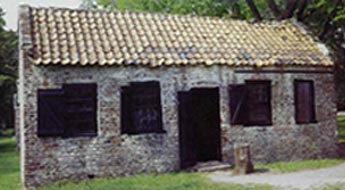Public History & Memory


Historic Site Evaluation
In 5-7 thoughtful and well-written pages, please evaluate the content and quality of an historic site. You should approach this assignment as both a scholar and a consumer of commemorated history, asking of the site many of the critical questions we have been asking all term about history, meaning, power, ethics and representation. This means that you must not merely reproduce the narrative of the past that your chosen site conveys, but you must analyze its implications, its advantages and its shortcomings.
You need to consider your site as a deliberate, constructed entity which conveys certain values.
Below, you will find a guideline of questions to consider when visiting and writing about your site. For example, think about when the time when location/event/individual became designated an historic site and how that time differs from ours. Consider its sponsorship, motives, government participation, focus and silences, words and symbols, site usage (here be creative and include examples of promotional and educational materials available at the site), and sources of authority.
You should push yourself beyond superficial readings here and into a substantive evaluation of the value of this particular historic site to a reader invested in gaining a better understanding of both the American past and the mechanisms of public history.
Note: I have intentionally limited this review to 5-7 pages because I do not want you to waste space discussing elements of the site that do not advance your argument about the site. You should have a central thesis evaluating the site and move from there analyzing the very best examples of elements of the site that support your claims. Parsimony is a very useful skill and you will practice it here. Enjoy.
Some critical questions to keep in mind when thinking and writing about
historic sites (with credit to James Loewen's very entertaining book,
Lies Across America):
1. When did this
location become a historic site? (When was the marker or monument put
up?
Or the house 'interpreted'?) How did that time differ from ours? From
the time of the event or person commemorated?
2. Who sponsored it? Representing which participant group's point of view?
What
was their position in social structure when the event occured? When the
site went 'up'?
3. What were the sponsors' motives? What were their ideological needs
and social purposes?
What were their values?
4. Who is the intended audience for the site? What values were they trying
to leave for us, today? What does the site ask us to go and do or think
about?
5. Did the sponsors have govt. support? At what level? Who was ruling
the govt. at the time? What ideological arguments were used to get the
govt. to acquiesce?
6. Who is left out? What points of view go largely unheard? How would
the story differ if a different group told it? Another political party?
Race? Sex? Class? Religious group?
7. Are there problematic (insulting, degrading) words or symbols that
would not be used today, or by other groups?
8. How is the site used today? Do traditional rituals continue to connect
today's public to it? Or is it ignored? Why?
9. Is the presentation accurate? What actually happened? What historical
sources tell of the event, people, or period commemorated at the site?
10. How does this site fit in with others that treat the same era? Or
subject? What other people lived and events happened then but are not
commemorated? Why?